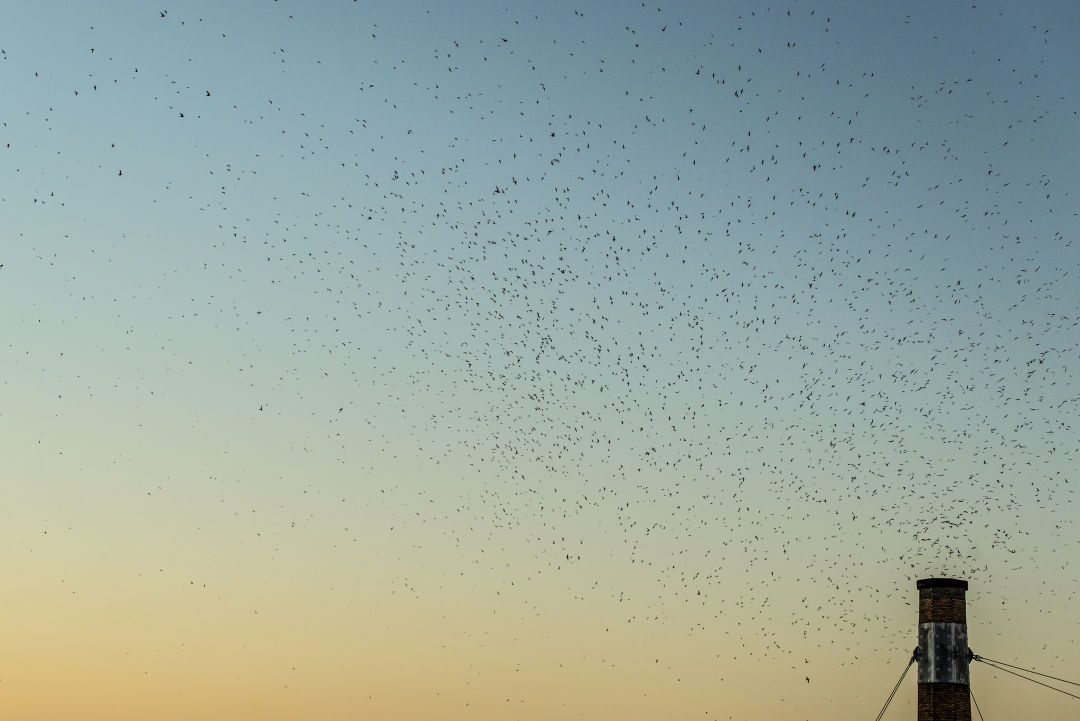Have the Vaux’s Swifts Abandoned Chapman Elementary School?

The Vaux’s swifts, in force at Chapman in 2012.
The news seemed impossible to believe. For nearly 40 years, thousands of Vaux’s swifts had spent several September weeks roosting in the chimney of Northwest Portland’s Chapman Elementary. Each evening, the birds—stout little things often described as cigars with wings—would gather in the sky above the school, swirling and whirling in spectacular unison before diving to bed. Just as impressive as the avian phenomenon was the human one, the way these wee aerialists drew great droves of fans, who would drop picnic blankets on the hillside and clink glasses of wine as their children rode sheets of cardboard down the sun-bleached slope.
But the data didn’t lie. On September 2, 2024, the Bird Alliance of Oregon, which has been surveying metro-area swifts since 2009, tallied 5,430 birds at Chapman: a respectable figure for the early date. But then numbers failed to climb, and within a few days had begun to dip. On September 12, a moment when counts would normally be peaking—recent years had seen up to 12,000—fewer than 1,000 swifts appeared. Only 60 showed up on the 16th. By the 18th, they were gone.
Nearly a year later, the Bird Alliance can’t say exactly why the swifts ditched the school. In October, well after the final birds had flown off for their winters in Central America, staff checked the chimney (decommissioned in 2001) and found no obstructions. They analyzed more than a decade of predator data—Cooper’s hawks, peregrine falcons, and crows regularly dine at Chapman—and saw no clear pattern. Crowd-size data likewise gave no clues. Drones? While they can disturb birds, none were reported in 2024.
What the Bird Alliance does know is that roost relocation is normal. In fact, Vaux’s (rhymes with “boxes”) swifts have been improvising for years. The birds do nearly everything on the wing—forage, court, copulate—and cannot perch on branches or walk on the ground. To roost, they cling to vertical surfaces, using their stiff tail as a kickstand. Historically, they preferred hollow trees. But as old-growth stands dwindled due to logging and development, brick chimneys became suitable substitutes. Word of a good one spreads. In 2015, a church in Rainier, Oregon, 50 miles northwest of Portland, removed a grate that had been blocking its unused chimney. Swifts showed up in 2019. Today, as many as 20,000 may seek shelter on a single September night, the large flock providing safety and warmth.
Joe Liebezeit, statewide conservation director at the Bird Alliance, hesitates to predict what’s ahead. But spring migration gave clues. As swifts returned to Oregon in late April and early May, none were detected at Chapman. Hundreds, however, bunked at the Holy Trinity Greek Orthodox Cathedral on NE Glisan—where upward of 5,000 roosted last September, as Chapman’s popularity was plummeting. Per Liebezeit, this could indicate a more permanent move. Or it may not. “These birds have minds of their own,” he says. And their show, of course, was never really for us.
Share this content:















Post Comment